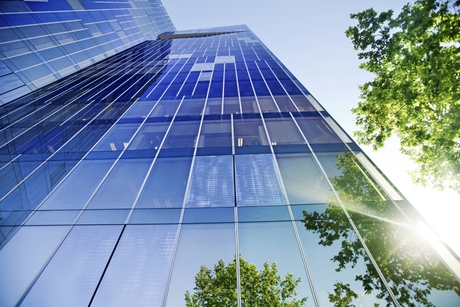Is the air we breathe indoors more important than outside air quality?

Today we spend more than 90% of our lives indoors, so monitoring our indoor climate is possibly more important than monitoring the outdoor climate, said University of Sydney researcher Professor Richard de Dear, director of the IEQ (Indoor Environmental Quality) Lab at the university.
Under his leadership, a compact device using new sensor technology was developed by PhD student Tom Parkinson, and his brother and research assistant Alex Parkinson, designed to be placed on workstations a couple of metres apart across an office floor from where all vital IEQ factors can be tracked.
Called the SAMBA (Sentient Ambient Monitoring of Buildings in Australia), the units can measure around a dozen different aspects, including air temperature, radiant heat, air movement, humidity, light, sound, carbon dioxide and monoxide, along with various pollutants emitted from building materials.
In what is being called the largest survey of Australian workplaces, hundreds of SAMBAs will soon be rolled out to track indoor air quality in around 50 of Australia’s property and banking corporate offices.
The huge volume of data captured by SAMBA is then wirelessly relayed in real time to the university’s IEQ lab to be immediately analysed and interpreted by the lab’s IEQ analytics software against IEQ performance standards set by Green Star and NABERS rating systems. It will offer building owners, operators and tenants understandable reports on their building’s IEQ performance.
“Many of us now spend our working lives almost exclusively inside office buildings. We therefore need to be better [at] managing indoor environmental factors for the sake of human health and wellbeing long term,” said Professor de Dear. “Research shows the considerable impact that IEQ factors can have on productivity in the workplace and building sustainability. However, one of the biggest challenges for organisations is understanding the complex science of IEQ.”
According to Professor de Dear, no-one has been able to capture holistic IEQ data with one piece of technology and make sense of the science — until now.

One of the first organisations to sign up for the pioneering technology is Investa Property Group.
“The new technology offers an effective and user-friendly method of collecting accurate IEQ metrics and data that doesn’t require any major modifications to our building systems,” Investa General Manager of Environment and Safety Shaun Condon said.
“It will give us the evidence to pinpoint what IEQ data is important and how to best capture, analyse and effectively report this information back to our tenants to improve their workplace environments.”
Professor de Dear said the IEQ metrics will provide rich intelligence about the indoor climate of Australian workplaces and the impact of high-rises on a city’s carbon footprint.
“It will quickly become the world’s largest instrumental database on the climate of the indoor work environment. The intelligence SAMBA will give us, and our partner organisations, provides the perfect opportunity to reset the barometer for healthy and productive workplaces inside buildings.”
Victoria's new psychological injury obligations now in effect
New obligations have come into effect for workplaces across Victoria to protect employees from...
Survey results show fall in national return to work rate
Safe Work Australia's 2025 National Return to Work (NRTW) Survey results have been released,...
National policy approach for workers comp and the gig economy published
Safe Work Australia has published a national policy approach for workers compensation and the gig...








